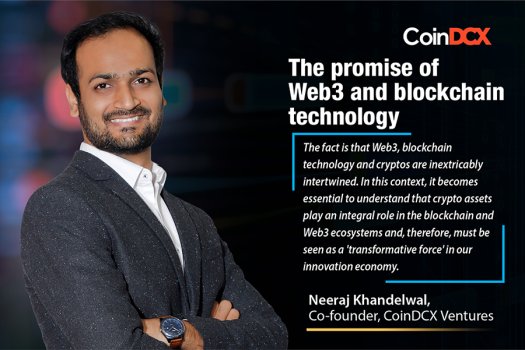The promise of Web3 and blockchain technology
- Technology Solutions
- 0 Replies
Web3, Blockchain, and Crypto are gradually making inroads into our lives. Financial institutions, government agencies and private organizations have either adopted or are preparing to integrate blockchain technologies in multiple aspects of their operations. Crypto assets have seen much wider adoption among retail and institutional users globally. The shift from Web2 to Web3 has started, and the complete transition will happen with time. While these emerging technologies and concepts are embraced for the tremendous economic and social value they offer; unfortunately, they are often viewed in silos. The fact is that Web3, blockchain technology and cryptos are inextricably intertwined. In this context, it becomes essential to understand that crypto assets play an integral role in the blockchain and Web3 ecosystems and, therefore, must be seen as a 'transformative force' in our innovation economy. Cryptos are much more than a new asset class and have an intrinsic value. Web3 is the latest and third generation of the internet built on blockchain technology. Web1, the first version of the internet, started in the late 1980s and was confined to basic features such as static web pages that could display information. The second version, Web2, enabled users to move from 'only read' to 'read and write.' A great emphasis was laid on user-generated content and participation; however, tech giants owning social media networks and cloud-based services gradually evolved into 'data centers' and controlled the content shared by users.
Continue reading: https://www.forbesindia.com/article/brand-connect/the-promise-of-web3-and-blockchain-technology/80915/1
Continue reading: https://www.forbesindia.com/article/brand-connect/the-promise-of-web3-and-blockchain-technology/80915/1

























